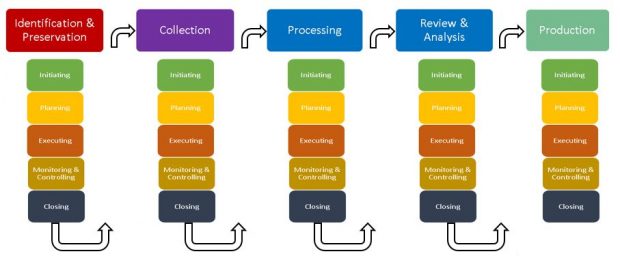eDiscovery Project Management: Ask Forgiveness, Not Permission
Do you need approval to save money? To reduce risk? To implement efficient, defensible processes for managing your work?

Mike Quartararo
Few people in legal operations discuss project management in the same sentence with electronic discovery or any aspect of legal work. When the subject does arise, you’ll hear people toss around phrases like “legal project management,” or you may hear talk of organization-wide process improvement efforts. Mostly, it’s about finding ways to be more efficient.
But organization-wide project management or process improvement initiatives require high-level buy-in and lots of resources and coordination. I don’t believe such buy-in or resources are required when it comes to implementing project management processes, particularly in the context of eDiscovery projects. And I don’t believe permission is needed either. Do you need approval to save money? To reduce risk? To implement efficient, defensible processes for managing your work?

Curbing Client And Talent Loss With Productivity Tech
I’ve had numerous conversations about how to integrate project management principles into legal work. There’s no doubt it can be done. My favorite example, of course, is using project management to manage discovery projects. It’s a little puzzling to some at first because, after all, we have the EDRM framework, right? Doesn’t that framework provide guidance? Does introducing project management methodologies only add to the confusion? Instead of a single time-honored framework, now we have to use a second framework?
Not to worry. The project management and EDRM methodologies are easily combined into a single framework. Let’s look at how that might be accomplished.
In a typical eDiscovery project, we move from left to right across the EDRM from Information Governance through Presentation.

Sponsored

How The New Lexis+ AI App Empowers Lawyers On The Go

AI Presents Both Opportunities And Risks For Lawyers. Are You Prepared?

Law Firm Business Development Is More Than Relationship Building

AI Presents Both Opportunities And Risks For Lawyers. Are You Prepared?
But everyone in operations knows that discovery projects don’t always move forward in such a linear fashion. Issues arise that change the project scope, timing, and cost.
What if we remove the left to right motion of the project?
What if we take the basic elements of the EDRM and insert the five project management process groups — Initiating, Planning, Executing, Monitoring and Closing — in a way that integrates the two into a new framework that ensures each phase is handled in standardized manner? This new Electronic Discovery Project Management model would probably look something like this:

This requires thinking about each node of the EDRM as a sub-project of the larger discovery project. And instead of a left to right workflow, it requires that processes progress in a down-and-over workflow. In this way, we integrate the project management process groups and all of the attendant principles and practices into the workflow.
Sponsored

Curbing Client And Talent Loss With Productivity Tech

Happy Lawyers, Better Results The Key To Thriving In Tough Times
This new model outlines a framework for a sound defensible process that recognizes the primary components of the EDRM and the value of project management in eDiscovery.
Why omit the IG component? We’re not ignoring IG; it’s just that IG involves many moving parts, policies and practices. Setting up an IG program within an organization is a huge project itself. Most organizations have less than mature IG programs, and they are not going to be prepared to undertake the design and implementation of an IG program during a discovery project. It therefore makes sense from a process perspective to start our new eDiscovery project management model with Identification and Preservation.
Similarly, the Presentation phase should be handled separately. Very few cases make it to trial and anyone who has worked on a trial knows it is a separate project. That said, presentation projects, like trials and hearings, are all sub-projects as well and project management may be used there as well.
A model like this may be used to develop a process framework for any legal work. The new model above simply combines the time-honored workflow of the EDRM with the principles of project management to create a process framework that will lead to successful outcomes in eDiscovery. Why would anyone need permission to implement these processes? Go for it. You’ll see the results. You can ask forgiveness later.
Mike Quartararo is the managing director of eDPM Advisory Services, a consulting firm providing e-discovery, project management and legal technology advisory and training services to the legal industry. He is also the author of the 2016 book Project Management in Electronic Discovery. Mike has many years of experience delivering e-discovery, project management, and legal technology solutions to law firms and Fortune 500 corporations across the globe and is widely considered an expert on project management, e-discovery and legal matter management. You can reach him via email at [email protected]. Follow him on twitter @edpmadvisory.







